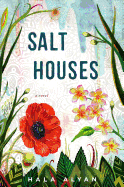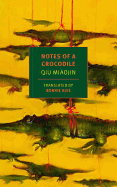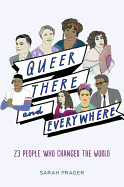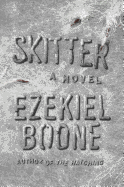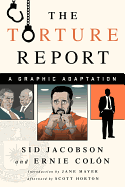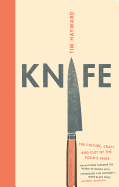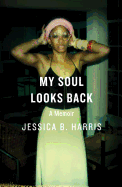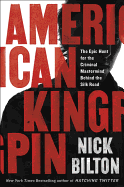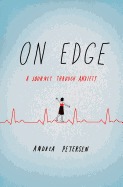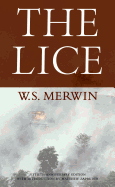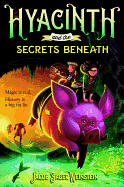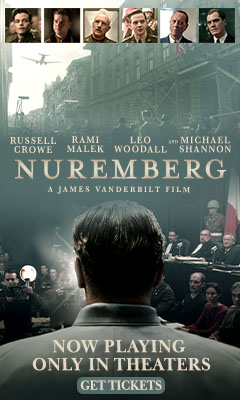Tuesday, May 23, 2017
For a while, all my friends seemed to be obsessed with S-Town, the new podcast by the creators of Serial and This American Life. In it, host Brian Reed probes suspicious behavior in an Alabama town after a resident begs him to investigate an outrageous murder. It's just a bad town, he's told, and bad things happen in bad towns. 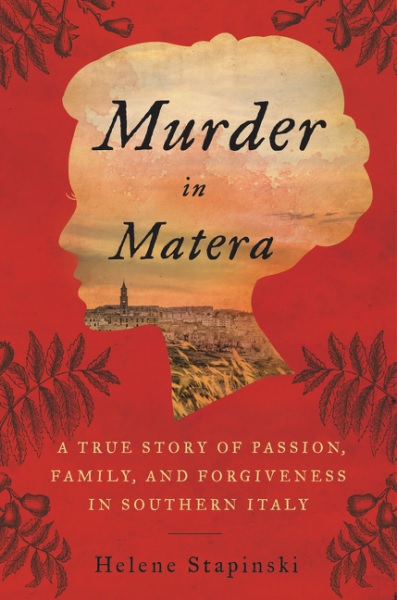 Like Reed, Helene Stapinski faces the question of criminal inevitability in Murder in Matera (Dey Street, $26.99). For her, though, it runs much deeper. A family legend has been passed down for generations about her great-great-grandmother: "Vita was a murderess. She took a life and ran." Her ancestor's violence and loose morals may yet reside in Stapinski's DNA, she's cautioned, and one day she or her children may succumb to such passions. To uncover the truth about Vita, Stapinski departs Brooklyn for the Italian province where it all went down.
Like Reed, Helene Stapinski faces the question of criminal inevitability in Murder in Matera (Dey Street, $26.99). For her, though, it runs much deeper. A family legend has been passed down for generations about her great-great-grandmother: "Vita was a murderess. She took a life and ran." Her ancestor's violence and loose morals may yet reside in Stapinski's DNA, she's cautioned, and one day she or her children may succumb to such passions. To uncover the truth about Vita, Stapinski departs Brooklyn for the Italian province where it all went down. 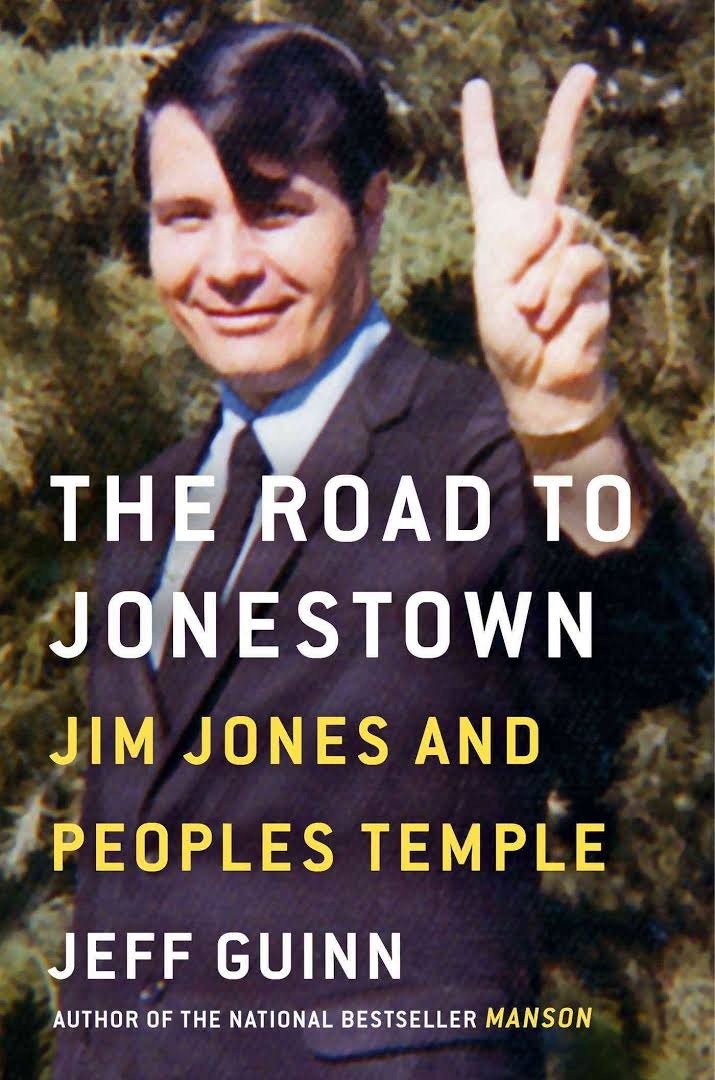 The question of bad seeds arises repeatedly in true crime, because usually the offense is so horrific we can't imagine how it could happen otherwise. That's what makes the Jim Jones biography The Road to Jonestown (Simon & Schuster, $28) so enthralling. Jeff Guinn reveals how an ambitious young integrationist became a murderous demagogue.
The question of bad seeds arises repeatedly in true crime, because usually the offense is so horrific we can't imagine how it could happen otherwise. That's what makes the Jim Jones biography The Road to Jonestown (Simon & Schuster, $28) so enthralling. Jeff Guinn reveals how an ambitious young integrationist became a murderous demagogue.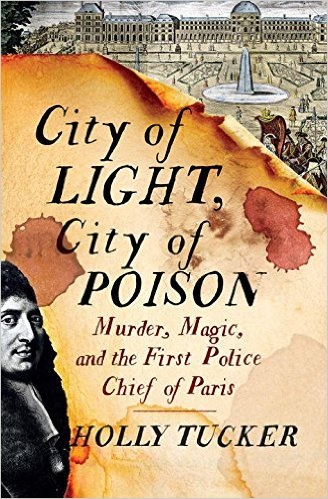 Likewise, environment can have just as much influence on criminal potential, as Holly Tucker illustrates in City of Light, City of Poison (Norton, $26.95). The Parisian court of King Louis XIV was rife with murder, sex and magic--mysteries the first police chief, Nicolas de la Reynie, was determined to solve, no matter how cruel the interrogation technique.
Likewise, environment can have just as much influence on criminal potential, as Holly Tucker illustrates in City of Light, City of Poison (Norton, $26.95). The Parisian court of King Louis XIV was rife with murder, sex and magic--mysteries the first police chief, Nicolas de la Reynie, was determined to solve, no matter how cruel the interrogation technique.
I hate waiting for new podcast episodes week by week; I get so caught up in the intrigue. With books, too, I can't seem to turn pages fast enough. But heaven forbid the plot gets spoiled. That would be a real crime. --Dave Wheeler, associate editor, Shelf Awareness
Salt Houses
by Hala Alyan
Hala Alyan's first novel follows the lives of one Palestinian family through the last half of the 20th century into the 21st. Although the history of the Middle East is filled with fraught moments during this time, Salt Houses focuses on what happens before, and after, those moments. Alyan, a poet who also works as a psychologist, is more interested in how people choose to, or choose not to, move on from moments of trauma and upheaval.
The book begins in 1963 with the wedding of headstrong Alia and taciturn Atef, a simple middle-class marriage in the Palestinian town of Nablus. Alia's mother, Salma, reads her daughter's tea leaves, and, in an act of motherly protection, lies about what she has seen. Her silence, while noble, does little to protect Alia from the traumas to come. Soon, she and Atef must flee Palestine for Kuwait, raising their family in a foreign world that shatters once the Gulf War begins. Their three children flee in turn--one, Riham, into a marriage to a much older man and a life of faith; the other two, daughter Souad and son Karam, to the West.
Merely by being a novel about Palestinians, Salt Houses will be considered a political work. That's unfair, given that Alyan very purposefully eschews any political position (in fact, the book seems to suggest any political stance is ultimately rendered untenable by the flow of time). The history of the Palestinian people drives the narrative, but Salt Houses treats it as ancillary, a way to present decisions that can be probed to explore deeper questions about family, love and overcoming trauma. --Noah Cruickshank
Discover: Salt Houses focuses on how a family can grow and survive in the wake of conflict.
Notes of a Crocodile
by Qiu Miaojin, transl. by Bonnie Huie
This English translation of Notes of a Crocodile aptly captures the extraordinary intelligence and sensibility of celebrated Taiwanese lesbian writer Qiu Miaojin (Last Words from Montmartre).
The novel focuses on a cadre of queer college students in Taipei, who form tenuous bonds of friendship--often evolving into eroticism--in the face of a society that, left unchallenged, would homogenize and flatten their personalities. At the center of this group is Lazi, the narrator, who struggles to control her desire for women she falls in love with, as well her own volatile sense of identity. Cleverly layered between Lazi's notebooks and diaries are satirical passages describing the hardships of a newly discovered crocodile who is trying to adjust to human society. In this way, Miaojin lends the queer experience a Kafkaesque strangeness, as the protagonist's alienation is embodied in a giant lizard.
But it is Lazi's candid, painfully self-conscious voice--not the crocodile's--that distinguishes this novel as a great work of literature. For Miaojin holds nothing back in her exploration of young love. She catches the fluid dynamics of relationships with nuance and uncanny precision: "the two of us would come to cherish our ambiguous rapport, at once intimate and unfamiliar, and tempered by moments of silent confrontation." In turn, such nuance is shaken by raw and visceral imagery--"dying beasts incapable of licking each other's wounds"--that lays the heart bare in manifold joy and torment.
Notes of a Crocodile is a powerful coming-of-age story about falling in love and loving oneself in an unjust world. --Scott Neuffer, freelance journalist, poet and fiction author
Discover: This touching novel from a Taiwanese literary icon unfolds like a love letter to misfits.
The Boy in the Earth
by Fuminori Nakamura, transl. by Allison Markin Powell
The unnamed protagonist in Fuminori Nakamura's The Boy in the Earth is struggling with depression and despair. On the days he manages to show up to work, he drives a cab aimlessly around Tokyo; on the days he stays home, he contemplates the many ways he could die. "My own existence was futile, utterly powerless--even if I devoted my entire being I couldn't leave the slightest mark on this world."
There's very little in the way of plot, making Nakamura's short book read more like a character study than a traditional novel. That's not to suggest that it's dull, however. Its lack of plot proves compelling from the very start, and its occasional aimlessness and moody darkness feels true to the main character's inner thoughts and feelings.
An impending sense of doom and violence pervades The Boy in the Earth: the taxi driver is robbed at knifepoint, contemplates killing himself and reflects on the horrible abuse he suffered at the hands of his adoptive family as a child. Though these trials are particular to this character, Nakamura's telling of them makes the taxi driver's troubles feel universal. To what lengths will an individual go to survive? What makes that survival meaningful? Who--and what--matters? Who does not? Translated from Japanese by Allison Markin Powell, The Boy in the Earth offers readers a darkly philosophic musing on violence, history, purpose and what it means to be alive, told in elegant prose. --Kerry McHugh, blogger at Entomology of a Bookworm
Discover: A depressed taxi driver in Tokyo faces down the violence in his life in search of meaning and purpose.
Science Fiction & Fantasy
Skitter
by Ezekiel Boone
Millions of people around the world are dead thanks to the flesh-eating black spiders that flowed across the earth like a tsunami. China used nuclear bombs to try to contain the infestation, cities have set intentional fires to burn them out, and President Stephanie Pilgrim and her cabinet have Los Angeles under military quarantine. If troops can locate and destroy the thousands of egg sacs laid everywhere, the human race might survive. That is, until a much larger, glowing egg sac is found in Japan, and changes everything.
Picking up where The Hatching left off, Ezekiel Boone's Skitter takes readers on another scary, whirlwind ride around a world where death awaits those unfortunate enough to be in the path of the creepiest spiders ever. New characters demonstrate the grisly demise that lies ahead for many; one man becomes a prophet with thousands of followers. Those who have survival instincts go to great lengths to protect their loved ones, but the focus remains on the central characters who played crucial parts in book one: Stephanie Pilgrim; Manny, Steph's lover and White House chief of staff; Melanie Guyer, expert on spiders; Mike Rich, Minneapolis cop and devoted father; and Shotgun and Gordo in their survival bunker in the desert. The narrative jumps quickly from location to location, building tension and momentum as the spiders continue to spread, following their own agenda. Boone has written another unsettling cliffhanger, destined to increase arachnophobia worldwide. --Lee E. Cart, freelance writer and book reviewer
Discover: The spiders are winning in the second installment of the Hatching series.
Graphic Books
The Torture Report: A Graphic Adaptation
by Sid Jacobson and Ernie Colón
Using euphemisms like "enhanced interrogation techniques," the George W. Bush administration assured the world it was treating terror suspects humanely. However, in 2009 the Senate Select Committee on Intelligence learned otherwise. The CIA had been sanctioning brutal interrogations that went against the laws of war the United States helped to write and promised to uphold.
Staff from the committee spent the next five years examining every possible bit of evidence that could illuminate the CIA's practices. Their work culminated in a 6,770-page "torture report." From that massive report, a summary of more than 500 pages was made available to the general public, leading Sid Jacobson and Ernie Colón--authors of The 9/11 Report--to collaborate once again, to depict the Senate Committee's summary in their graphic novel The Torture Report.
Jacobson and Colón have the unenviable responsibility of delivering shocking, disturbing, horrific details of torment and persecution to readers who may prefer to know little about these acts. But the result is exemplary. The illustrations portray the immense suffering without extremely gory details, thereby encouraging civilian citizens to take note, understand and be educated to the truth of torture. The Torture Report respects the gravity of the subject matter, but eliminates much of the governmental and law enforcement jargon.
The authors portray the victims with compassion without ignoring the circumstances of imprisonment. Their work is far from uplifting, but it is informative and vital to U.S. citizens. --Jen Forbus, freelancer
Discover: The U.S. government's report on the horrors of interrogation practices against terror suspects takes illustrated form in this eye-catching yet respectful graphic nonfiction.
Food & Wine
Knife: The Culture, Craft and Cult of the Cook's Knife
by Tim Hayward, illus. by Chie Kutsuwada
Knife: The Culture, Craft and Cult of the Cook's Knife by food writer and self-proclaimed "food geek" Tim Hayward (Food DIY; The DIY Cook) showcases a ubiquitous kitchen tool, from lowly paring knives to handcrafted objets d'art. This may not be the cookbook that gets spattered with grease and smeared with chocolate, but it will take a place of honor on the serious cook's shelf.
Essays and lists accompany the 40 featured knives--each photographed in color, with lighting that complements their cool steel blades. Topics covered include the reason for proper grip, 10 rules for carving, and the difference between working and specialized variations. Hayward interviews knife makers and chefs, illuminating an ongoing fascination with the tool. "The knife has a spirit imbued into it by the bladesmith that enables the user to give it character, so I almost look forward to the moment I get a first scratch on the blade."
Along with features of knives themselves, Hayward reviews the proper ways to cut food (who knew there were so many precise names for vegetable slicing!) and, helpfully, what to do when you cut yourself. As he says, "The knife is one of the few objects to which we give house room while simultaneously fearing."
In this beautifully designed book, Hayward's deft writing skills and culinary knowledge provide an intriguing reference for both the casual reader and the serious knife user. --Cindy Pauldine, bookseller, the river's end bookstore, Oswego, N.Y.
Discover: Food journalist Tim Hayward turns his attention to the most basic of culinary tools: the knife.
Biography & Memoir
Love and Trouble: A Midlife Reckoning
by Claire Dederer
Love and Trouble: A Midlife Reckoning doesn't lend itself to the popular "if you liked..." formula for recommending books. Claire Dederer (Poser) defies comparison as she explores her sexuality, femininity, life as a writer and coming of age in a Seattle that has continually grown and transformed over the decades.
Loosely based on her journals, chapters are dated but not chronological. Their 23 titles are often comical; Dederer's wit is irrepressible. "A Is for Acid: An Oberlin Abecedarium," for instance, about her college years. Or "How to Have Sex with Your Husband of 15 Years": A bed is required. Demur if your husband suggests the floor or the couch. Family spaces are "marked by the product of sex: children."
Dederer reflects from the vantage point of midlife, as a wife, mother of two and successful author, asking how the wild girl she was became the well-mannered woman she is now. In 1980, at age 13, she had been eager to impress an older guy, "kitted out with the signifiers of cool--filthy clothes, long hair, laconic speech, all the stuff I knew to be aces, all the stuff I myself aspired to." Dederer hilariously and poignantly analyzes her "near-rabbit levels of sexual activity" during adolescence to understand better the desires resurfacing in her 40s.
Love and Trouble explores the challenges of growing up female, and will no doubt speak to readers of any age, about feminism and objectifying girls, as well as friendship, family and devotion. --Cheryl Krocker McKeon, manager, Book Passage, San Francisco
Discover: Claire Dederer explores her coming of age and how she sees the effect of her early experiences on the woman she became.
My Soul Looks Back
by Jessica B. Harris
Jessica B. Harris (High on the Hog: A Culinary Journey from Africa to America) is a noted culinary historian and author. She is a member of the James Beard Who's Who of Food & Beverage in America and helped develop the concepts behind the critically admired Sweet Home Café at the Smithsonian's National Museum of African American History and Culture. But once, she was a young woman starting her career and in a confusing relationship with a charming, sophisticated, bad-tempered older man. That man was Sam Floyd, her teaching colleague at Queens College, one-time lover of Maya Angelou and close friend of James Baldwin.
Harris emphasizes that she is a secondary player in this memoir, but she was an interesting young woman in her own right, raised in Queens by bohemian black parents who gave her piano lessons, dance recitals, etiquette lessons and a good education. The couple bonded over shared loves of cooking, language and literature. He introduced her into Baldwin's literary circle, and between his connections and her work as a literary and theater critic, she landed on the front line of 1970s New York culture, where she met authors, activists, actors, musicians and chefs.
Harris's culinary expertise winds through her stories, and each chapter ends with a recipe, including her mother's Sunday roast chicken and Goujonnettes de Sole with Ersatz Sauce Gribiche, inspired by her favorite after-opera meal. No doubt a few of Harris's friends have been saying for years that she had to write this memoir, and if so, they were right. --Sara Catterall
Discover: The electric intellectual and artistic world of African Americans in 1970s New York City takes center stage in this memoir of culinary historian Jessica B. Harris's youth.
Current Events & Issues
American Kingpin: The Epic Hunt for the Criminal Mastermind Behind the Silk Road
by Nick Bilton
Nick Bilton (Hatching Twitter) describes the rise and fall of a very different Internet start-up in American Kingpin: The Epic Hunt for the Criminal Mastermind Behind the Silk Road. The titular subject is Ross Ulbricht, an idealistic millennial who often seems less like a criminal mastermind and more like a kid way in over his head. An ardent libertarian, Ross put his beliefs into practice by starting the Silk Road, a site on the anonymizing Dark Web where people could buy and sell drugs using a recently invented (and supposedly untraceable) digital currency called Bitcoin. By the time the website was closed down in 2013, global sales had reached $1.2 billion.
As the Silk Road takes off, Bilton flits between Ulbricht and the eccentric civil servants across the FBI, CBP (Customs and Border Protection) and IRS who took the lead in unmasking the "Dread Pirate Roberts"--Ulbricht's online handle, a reference to The Princess Bride. Bilton does a lot of work to understand the characters, but he's ultimately upstaged by the astonishing events themselves. Ulbricht, with a minimum of soul-searching, approves expanding the websites' wares to include guns, poisons, hacking tools and even human organs. His ethical lapses are almost matched by a few bad actors on the law enforcement side who attempt to steal huge amounts from the website and cover their tracks with torture and a faked contract killing. Fictional shows like Breaking Bad have nothing on Bilton's wild true story. --Hank Stephenson, bookseller, Flyleaf Books
Discover: American Kingpin recounts the hard-to-believe true story of Ross Ulbricht, an idealistic young man who started an online drug empire.
Psychology & Self-Help
On Edge: A Journey Through Anxiety
by Andrea Petersen
Anxiety disorders don't discriminate. As Wall Street Journal science and health reporter Andrea Petersen learned as a student in college, the debilitating fears that paralyze about 40 million adults in the United States, and the racing heart and strangled breaths of panic attacks, don't care about socio-economic status, race or sexual orientation. While women are more likely to suffer from the disorder ("There is no greater risk factor for anxiety disorders than being born female"), men are vulnerable to it as well. Even the young aren't safe from anxiety; in fact, the rate of diagnosis among college students is on a startling rise.
In On Edge: A Journey Through Anxiety, Petersen shares her experiences battling panic attacks and fears as she explains the biological and psychological research underlying current treatments of the 11 anxiety disorders recognized in the Diagnostic and Statistical Manual of Mental Disorders (DSM). They encompass a wide spectrum of symptoms and are closely tied to other afflictions, such as depression. Those who can identify with any of the evils of anxiety will discover solid research that offers options, understanding and hope. They'll even find some humor. On Edge can even help those who are fortunate enough to elude the irrational fears of anxiety. Petersen quotes Harvard Medical School professor of psychiatry Jordan Smoller: "People underrecognize the toll that [anxiety] takes on people's lives." For those with a family member, friend or employee who is battling with this invisible demon, On Edge can shed light down the dark cavern and help them support their loved ones when "uncertainty far too easily morphs into inescapable catastrophe." --Jen Forbus, freelancer
Discover: A Wall Street Journal science and health reporter takes readers inside the world of anxiety disorders using the most current scientific research and her own journey to a healthy life.
Poetry
The Lice
by W.S.Merwin
This 50th anniversary edition of W.S. Merwin's groundbreaking poetry collection The Lice introduces the poet's bold experimentation to a new generation of readers.
These poems are unrestrained by meter or rhyme. But while many poets who write in free verse adhere to some punctuation, Merwin abandons the comma and the full stop, creating heady juxtapositions through run-on sentences and enjambment. His lines flow in a moody stream-of-consciousness, taking shape both literally on the page and metaphorically, eddying around persistent themes. Like T.S. Eliot, Merwin mines antiquity for symbols. His imagery has an archaic feel. Here are moons, shadows, stones, hands and moths. But he repurposes these motifs in a modernist style to match his impressions of a dark, unaccountable, mid-20th-century world drifting toward annihilation. If The Lice is about anything, it's about the way death both eludes and rules the mind.
The best poems in the collection punctuate the poet's general dreaminess with stark, comparatively plain insights. "And once more I remember that the beginning/ Is broken," reads the terse "Whenever I Go There." In a single, unmoored line, it concludes, "Today belongs to few and tomorrow to no one." When Merwin's thoughts alight on the natural world outside the mind, away from the mythos of the self, the results are breathtaking. "The Widow," for example, opens with a beautifully humble image: "How easily the ripe grain/ Leaves the husk/ At the simple turning of the planet." The same poem produces one of the collection's most powerful lines: "Everything that does not need you is real."
The Lice is inquisitive, bleak and, at its best, profound. --Scott Neuffer, freelance journalist, poet and fiction author
Discover: This commemorative edition showcases the early existential musings of one of modern poetry's most recognizable names.
Children's & Young Adult
Queer, There, and Everywhere: 23 People Who Changed the World
by Sarah Prager, illus. by Zoë More O'Ferrall
Queer people--"anyone outside society's gender and sexuality norms"--have always been a part of world history, whether we knew it or not. Presidents (and first ladies), Roman emperors/empresses, musicians, athletes, nuns and civil rights leaders have been gay, bisexual, panromantic, transgender and everywhere else along the gender and sexuality spectrum. Although some of these people were accepted in their time and place, many others were closeted or persecuted. Furthermore, "[f]ear of rejection, physical violence, execution, conversion therapy, and more still haunt millions of queer people's daily lives." Nonetheless, today in the United States (and other countries), "a mountain of rights and communities unparalleled at any point since the founding of this country" has been built. In Queer, There, and Everywhere, author and activist Sarah Prager celebrates the lives of 23 people over the past couple thousand years who made remarkable contributions to history.
Written with a pop culture sensibility that will appeal to teen readers, the collection is a fascinating look at history through a different lens than what most history books provide. In the chapter on Abe Lincoln (yes, the Great Emancipator makes an appearance!), Prager writes about Abe and his "intimate friend" Joshua Fry Speed: "They talked to each other all the time about being freaked out about the prospect of getting married" to women. But don't let her breezy style make you doubt Prager's seriousness as a researcher. She has dug deep into the history vaults for biographical information, and includes quotes from letters and interviews, as evidenced in her extensive bibliography and notes section. Each chapter is introduced with Zoë More O'Ferrall's friendly pen-and-ink portraits of the subject. Hurray for Sarah Prager's own splendid contribution to queer history! --Emilie Coulter, freelance writer and editor
Discover: This funny, fascinating collection celebrates the contributions of queer people, including a gender-bending 17th-century sovereign, computer inventor Alan Turing and social-media sensation George Takei.
Hyacinth and the Secrets Beneath
by Jacob Sager Weinstein
A few boring weeks after her mother forces her to move to London from Illinois, all 12-year-old Hyacinth Hayward wants is a sink that combines hot and cold water. An attempt at amateur plumbing unleashes a magic drop of water into London's sewers, and Hyacinth learns she has until midnight to track it down and exchange it for her mother--who has been kidnapped. In the sewers, she meets a giant pig with index cards for every occasion (including "A YOUNG LADY OF QUALITY, TREATED MOST RUDELY BY RATS"), an old lady who's keeping secrets and an unknown side to the Royal Mail, among other surprises. As Hyacinth encounters toshers (aka sewer scavengers), anarchists and Inheritors of Order (or, as the anarchists see it: Elitists and Egalitarians), she realizes that she is the only one she can trust to use London's many secrets to save her mom.
In his first book for children, Jacob Sager Weinstein uses plentiful humor to hold together the boisterous plot as Hyacinth stumbles through her adventure. Her wry, self-aware voice ("Now, usually, I wouldn't be thrilled to have a giant underground cathedral collapsing around my ears") keeps Hyacinth and the Secrets Beneath light even in intense moments.
"I made up much less of this book than you might think," Weinstein writes in his brief author's note, and parents and teachers may find that readers are so excited for the next installment of this series that they willingly research London history to prepare. --Stephanie Anderson, assistant director for public services, Darien Library (Conn.)
Discover: A lively and inventive fantasy chapter book for fans of Catherynne Valente and Terry Gilliam.
| Advertisement nuremberg--now playing in theaters |


